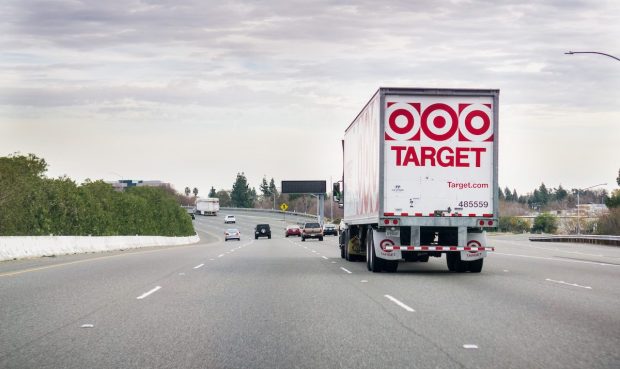Target to Double Rapid Sorting Capacity Amid Demand Spike for Same-Day Delivery

Target may have its hands full trying to pare back its unsold inventory and shore-up slumping profits, but the retail giant told investors it’s also tackling a third “problem” of sorts, as it tries to keep up with a spike in demand for same-day delivery and in-store pickup.
In pointing to the outsized growth for its same-day delivery services, Target said it plans to double its investment in the small, local “sortation centers” it has been adding lately to help support rapid order fulfillment by nearby stores and ease its final mile logistical challenges.
According to Target CEO Brian Cornell, the increased commitment to meeting demand for same-day and in-store order pickup is a direct result of changing consumer habits and increased traffic to its stores and website, which he said have added 90 million new customers in the past three years.
“Our industry-leading, same-day services have transformed our business in a short time,” Cornell said on the retailer’s second quarter earnings call Wednesday (Aug. 17).
Where Target’s digital business accounted for 7% of its total sales in 2019, Cornell said the same-day delivery portion of those digital orders — on their own — now drive over 10% of its total revenue, helping lead an increase in its total digital penetration rate, which he said is now up to almost 18%.
Target’s increased sortation center investment is consistent with a PYMNTS survey of 2,700 consumers that showed 34% of connected consumers now demand same-day pickup and delivery, with 9% of consumers using buy online, pick up in-store (BOPIS) every day.
Better, Faster, Cheaper
As it stands, almost 95% of Target’s $26 billion in Q2 sales were fulfilled by its network of nearly 2,000 stores, but to meet this surge in same-day demand, Chief Operating Officer John Mulligan said the Minnesota-based chain is in the process of rapidly expanding the number of sortation centers operating around the country.
“We have six of these facilities operating today, including three that have opened in the last few months, and we have plans to add five more by early next year,” Mulligan said on the call, adding that the small facilities expand Target’s ship-to-store capacity while also significantly reducing its last-mile delivery cost, including its ongoing integration of its Shipt delivery unit and fleet of drivers.
“Given the package delivery density we’ve achieved across many markets over the last few years, we see continued opportunities to add more sortation centers in the next few years,” Mulligan said, noting the speed and cost advantages they bring at a time when the retailer is working through a broader inventory problem that it unveiled in May.
Alongside the new sortation centers, Mulligan said Target will also continue to modernize existing distribution centers via new automation processes that reduce the amount of in-store work needed to receive inventory and restock shelves.
On Trend
Broadly speaking, Target is experiencing the same inflation-driven shift to groceries and essential items that rivals such as Walmart reflected Tuesday (Aug. 16), as well as a rise in shoppers that are interested in taking advantage of its current increase in promotional activity.
“While the recent reduction in prices at the gas pump has been encouraging, guests’ confidence in their personal finances continues to wane,” Chief Growth Officer and 19-year Target veteran Christina Hennington said on the call, before highlighting an increase in shoppers buying Target’s owned-brands versus national label products.
“We’ve also seen guest behavior evolve as they focus on optimizing their personal budgets through a heightened response to promotions, as well as greater trip consolidation,” she added, while noting the company’s plans to add more Disney and Ulta Beauty store-in-store locations as a way to boost traffic and store visits.
In sum, the retailer said it is maintaining its current but previously reduced cautious guidance for the second half of the year while moving ahead with plans to stock up on frequently purchased items customers now want and trimming down on the big bulky warehouse-stuffing items they don’t.
“As we look ahead to the back end of the year, the team is laser focused on delivering convenience, value and joy at a time when our guests are facing multiple challenges,” Cornell concluded. “While we’ve taken a cautious stance on our inventory commitments, we will continue to lean into frequency categories where guest demand has been strong and where the markdown risks are very low.”
For all PYMNTS retail coverage, subscribe to the daily Retail Newsletter.
